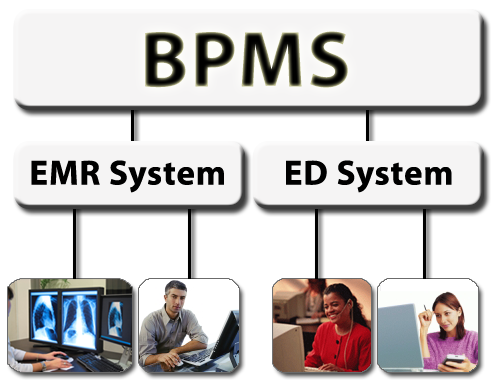Attending the Institute for Healthcare Improvement (IHI) National Forum on Quality Improvement in Healthcare, I learned firsthand that having multiple, non-communicating systems is a huge challenge for hospitals. Of the numerous attendees with whom I spoke, the number one complaint was "too much data re-entry into too many disconnected systems". What hospitals appear to be lacking is the "glue" that can hold disparate systems together facilitating integration and communication.
As with any business, hospitals and healthcare facilities often identify specific departmental problems that can be quickly and easily solved with a relatively inexpensive point solution. For example, an Electronic Medical Record (EMR) System can serve as a database containing all of a patient's medical history. While an application like this successfully meets the needs for capturing patient information and eliminating paper-based records and forms, it may fail to integrate with other hospital systems revealing problems such as :
- The inability to transfer the correct patient data throughout departments
- Notify physicians of up-to-date medical information from another system
- Accurately report medication information
- Display proper medical history
This is where Business Process Management (BPM) becomes an important resource. BPM is the "glue" that connects systems allowing for seamless integration and communication. The American Recovery and Reinvestment Act of 2009 provides guidelines and incentives to practices committed to developing a national network of medical information interoperability based on a national Electronic Health Record Systems (EHR-S). This begs for a technology platform that integrates systems, organizes data across those systems, and optimizes EMRs to ensure they work together efficiently. These needs are exactly in line with a quality Business Process Management Suite (BPMS). Where BPM can add value to the EMR is:
- Analyze and improve critical patient safety processes
- Coordination of information across systems
- Integration of information across Healthcare Providers
- Simple to use, web based, use from anywhere
- Instant feedback and approval within processes
- Assists in maintaining compliance

With this type of systems architecture, Healthcare Providers will continue to utilize the EMR systems that they are accustomed to today, but BPMS works to coordinate information across those systems, unify task lists, and integrate data across the applications.
Relevant links:
Reduce Process Rework with Role Definition in Organizational Charts
Security in BPM Suites Can Remedy Security Breaches in Paper based Medical Records
Business Processes: Recognizing You Need Business Process Improvements
Mary Katherine Strupe
Marketing Coordinator
Ultimus


